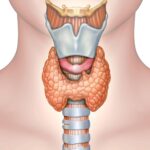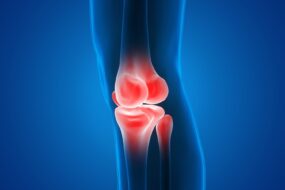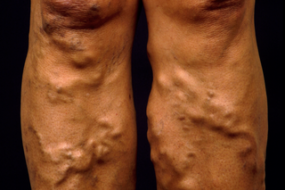
Pheochromocytoma is a rare extra-adrenal chromaffin tissue or adrenal medulla tumor that secretes an excessive amount of catecholamines (epinephrine and norepinephrine). The most common site is adrenal (more than 90%). The other sites are the organ of Zuckerkandl, bladder, mediastinum, and scrotum.
Epidemiology
- Pheochromocytoma disorder occurs in less than 1% of patients with hypertension, and 90% are benign tumors. It is equally common in men and women and can occur at any age but rarely after the age of 60 years.
- Occurs in the medulla of one or more adrenal glands.
- Sometimes occurs outside the adrenal gland.
- It may occur as a single tumor or as more than one growth.
Rule of 10s for pheochromocytoma
- 10% familial
- 10% extra-adrenal
- 10% malignant,
- 10% multiple tumors
- 10% pediatric
- 10% bilateral
- 10% extra-adrenal
- 10% calcified
- 10% not associated with hypertension
Risk factors
- Von Recklinghausen disease
- MEN II
- Von Hippel-Lindau disease
- family history of pheochromocytoma
- Familial paraganglioma
Clinical features
- Classic triad: headache, episodic diaphoresis, and palpitations.
- Severe headache is the most common symptom.
- Sympathetic overactivity- impaired vision, anxiety, hyperglycemia, tachycardia, flushing, and hypertension.
- Smooth, nonmobile abdominal mass that may cause changes in blood pressure on palpation
Investigations
- 24-hour urine collection for catecholamines and their metabolites
- Blood glucose levels- check for hyperglycemia.
- Full haemogram- check for polycythemia.
- Ultrasound scan of the abdomen – localizing tumor test
- CT scan- to localize the tumor
- MRI- to localize the tumor
- Iodine labeled metaiodobenzylguanidine( 131I-MIBG) scan- to localize the tumor.
- PET scan- to localize the tumor
Differential diagnosis
- Renovascular hypertension
- Functioning carcinoids
- Menopause
- Preeclampsia
- Migraine headache
- Hyperthyroidism
- Heart conditions
- Anxiety status
- Neuroblastoma
Treatment
- Surgery- adrenalectomy
- Preoperative medical treatment with alpha blockade (e.g., phenoxybenzamine) increases the intravascular volume to reduce the catecholamine-induced vasoconstriction.
- Sodium nitroprusside infusion is administered intraoperatively.
Complications
- The hypertensive crisis following manipulation
- Cardiac arrhythmias
- Hypotension following complete removal of the tumor












